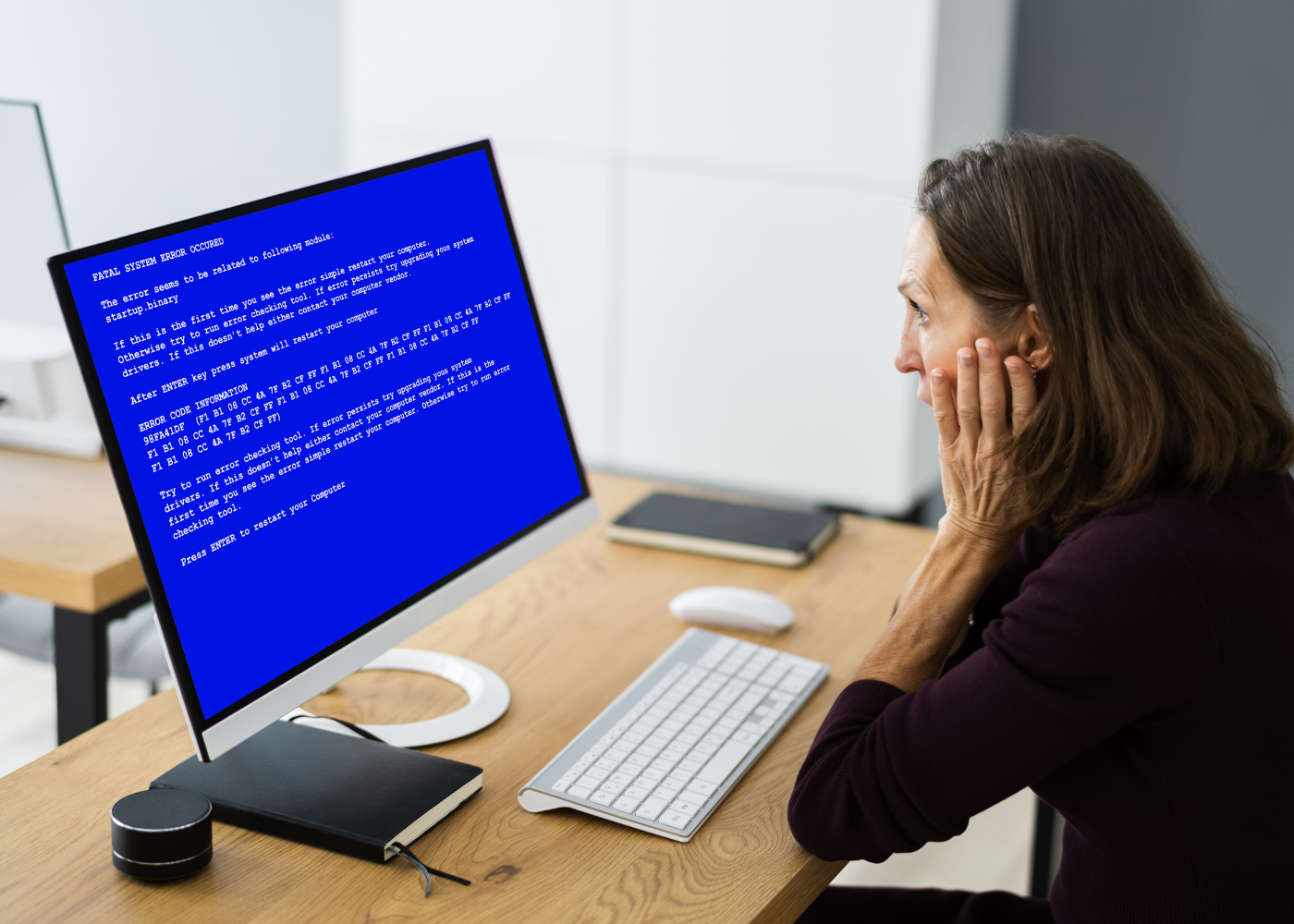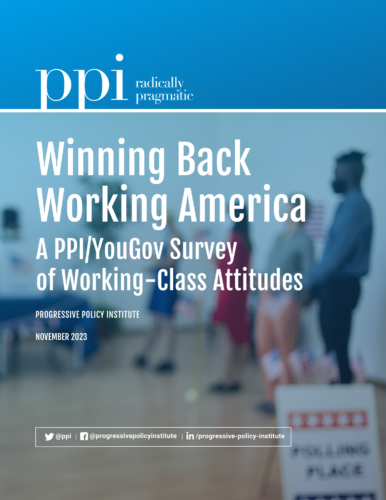FACT: U.S. Internet policy is suddenly uncertain.
THE NUMBERS: U.S. export growth, 2012-2022*-
| Energy |
176% |
| Information & “potentially digitally-enabled” services: |
59% |
| All goods and services: |
34% |
| Agriculture |
34% |
| Manufactured goods: |
19% |
| Other (non-digitally deliverable) services |
-10% |
*Sources: WTO for all goods and apparel; UN Food and Agricultural Organization for fish; Stockholm International Peace Research Institute (SIPRI) for arms sales. SIPRI data covers known transfers of “major conventional weapons.”
WHAT THEY MEAN:
A cryptic late-October comment from the American delegation to the World Trade Organization in Geneva quietly withdraws a set of long-held U.S. “digital trade” policy goals — and in doing so raises questions about whether the U.S.’ traditional “open internet,” “pro-consumer,” “internet freedom,” and “public-interest regulation” approach has changed. The brief and impressively opaque comment:
“Many countries, including the United States, are examining their approaches to data and source code, and the impact of trade rules in these areas. In order to provide enough policy space for those debates to unfold, the United States has removed its support for proposals that might prejudice or hinder those domestic policy considerations. The JSI [“Joint Statement Initiative”, the WTO’s name for the relevant discussion] continues to be an important initiative and the United States intends to remain an active participant in those talks.”
How to interpret this? Background first on the big picture, then the “data and source code” in trade policy more specifically; and finally, lacking anything more to go on than the three-sentence comment above, some questions about what this actually means:
1. Larger context: “Digital trade” issues are part of a larger U.S. policy pretty consistently pursued since the launch of the World Wide Web, meant to encourage the preservation and future development of an open, universal Internet, with a foundation in user rights and liberty, impartial public-interest regulation, and due process. Several digital trade issues get mentioned, for example, in the “Declaration for the Future of the Internet,” posted in August 2022 by the U.S. and 64 other Internet- and speech-friendly countries in the Western Hemisphere, Europe, Asia, Africa, and the Pacific and still up on the White House and State Department websites. This is a 3-page set of principles and goals for next-generation Internet governance, which along with promoting universal access, privacy, consumer protection, common programs to fight electoral disinformation and online bigotry, and other valuable ideas involves commitments to “ensure that government and relevant authorities’ access to personal data is based in law”, “promote our work to realize the benefits of data free flows with trust,” and “refrain from blocking or degrading access to lawful content, services, and applications.” These are, incidentally, contested ideas which have opponents: other governments, inter alia and perhaps most prominently China’s, envision a quite different future with more rights for surveillance and service interruption, less multistakeholder-ism, and fewer limits on government rights to limit access, data transfers, and privacy.
2. Nature of issues: The now-‘paused’ “data and source code” proposals refers to four topics, which the U.S. until last month had been discussing with 76 other WTO members in a venue called the “Joint Statement Initiative on Electronic Commerce.” They include (a) cross-border flows of digital data in the course of business, shopping, gaming, email, etc.; (b) guidelines for the circumstances in which governments can require local storage of data and when they shouldn’t; (c) cases when governments can direct businesses to disclose their software codes; and (d) ensuring that trade rules don’t discriminate against digital products.
If one were to look for an analogy in “trade policies for goods” like cars or wine, a useful though not exact comparison would be to “trade facilitation” and agreements on Customs procedures. Typical U.S. trade agreements require Customs agencies to provide online access to import and export forms, accommodate express delivery shipments, and ensure that other governments don’t use different inspection procedures for containers carried by different shipping lines or cars delivered to different ports. These sorts of rules reduce costs and delays, help toys and flowers move through airports and seaports rapidly and easily, encourage the countries and businesses that make or grow them to compete on quality and price as opposed to hidden policy favoritism, and help port officers focus on law enforcement and public health inspections. In the same way, rules encouraging free flows of data, or discouraging mandatory in-country storage and server construction, help make legitimate services trade — say, email connections, exchange of architectural planning, news and entertainment streams, etc. — easier and cheaper while helping government officials focus their work on cyber-security violations, spam prevention, and other threats.
3. Economics and trade flows: Digitally delivered services arriving via submarine cable or satellite — software, entertainment, computer technologies, professional stuff such as architecture, new earners like telemedicine and distance education — have a plausible claim to be the fastest-growing form of trade. In the U.S. case, they totaled $720 billion in 2022. By various metrics this was (a) up about 60% in the past decade, roughly twice the growth rate of overall U.S. exports; (b) a quarter of the $3 trillion in total U.S. exports in 2022, and a few hundred billion dollars more than the $380 billion for energy and $195 billion for agriculture, (c) easily the largest digital export figure for any country in the world, and (d) a thirtieth of the U.S.’ $26 trillion GDP. More subtly, digital data flows underpin lots of high-end manufacturing sales. Examples include cars that notify owners of the need for brake repair or oil change; medical devices providing diagnoses and filling prescriptions for rural clinics, agricultural machinery planting rice when the weather is right, etc. So by whatever measurement, digital trade flows support a large and highly remunerative part of the American economy and it’s quite logical for the government to care about them.
4. Current Agreements and Rules: The U.S. “digital trade” ideas are not actually experimental, but are live parts of several currently active U.S. agreements as well as the WTO’s incomplete “Joint Statement” discussions. These are Chapter 15 of the U.S.-Korea FTA, which “entered into force” as the jargon puts it in 2012; Chapter 19 of the “U.S.-Mexico-Canada Agreement” which revised the North American Free Trade Agreement in 2020; and a 19-page U.S.-Japan digital trade agreement signed in 2019. Their substance:
(a) People and businesses in participating countries have the right to move data across borders freely (e.g. for an online shopper ordering a set of toothbrushes, or an auto manufacturer whose car corresponds digitally with the home office to request software updates or notify police about an accident), with an exception for any government action “necessary to achieve a legitimate public policy objective” (e.g. anti-spam, cyber-security, protection against disinformation campaigns, etc.).
(b) Government power to require companies to turn over software code to agencies (or, often more the point, to local competing firms) is limited to public-policy regulation and good-faith investigations as opposed to arbitrary and/or discriminatory rules.
(c) Governments can’t be required to store data and build servers within a country, so as to reduce costs (and along with this, the power consumption and consequent carbon emissions) of constructing redundant servers and data centers in numerous countries.
5. What’s going on? What, finally, does the withdrawal of these ideas at the WTO mean? The three-sentence statement quoted above doesn’t explain. So rather than speculating, we offer a few questions that pretty badly need an answer:
* Does the administration want “policy space,” so as to be able to limit Americans’ data flows or require exposure of source codes for reasons that go beyond “measure[s] needed to achieve a legitimate public policy objective.” If so, what sort of things are they thinking about, and what law would authorize it?
* If the data and source code ideas are out of favor at the WTO, are the USMCA, Korea-FTA, and U.S.-Japan Digital Agreement provisions now insufficient? If so, is the administration thinking about changes to them?
* Or is the concern more about foreign governments’ “policy space”? If so, what are these governments hoping to do that Mexico and Canada (and Japan and Korea) are managing to do without?
* And how do any of these concerns relate to the larger hopes for the next-generation digital world — access and technical interoperability, innovation and economic growth arising from future rises in data flow, public-interest regulation, user privacy, and liberty — set out in the Declaration for the Future of the Internet?
Answers awaited, here and in lots of other places.

FURTHER READING
The Declaration for the Future of the Internet.
The WTO’s Joint Statement Initiative on e-commerce.
The U.S. Trade Representative Office’s brief statement.
Highly displeased response from Sen. Ron Wyden (D-Ore. and Finance Committee Chair).
And similar reaction from Digital Trade Caucus Chairs Suzanne DelBene (D-Wash.) and Darin LaHood (R-Ill.).
Current agreements:
USMCA text (see Chapter 19, “Digital Trade”).
U.S.-Japan digital trade agreement text.
Korea-U.S. Free Trade Agreement, see Chapter 15 on “Electronic Commerce.”
And some PPI background on Internet and digital trade policy:
Gresser on digital trade policy.
Chief Economist Mandel on regulation of digital platforms.
And Technology Policy Analyst Malena Dailey on transatlantic data flows.
ABOUT ED
Ed Gresser is Vice President and Director for Trade and Global Markets at PPI.
Ed returns to PPI after working for the think tank from 2001-2011. He most recently served as the Assistant U.S. Trade Representative for Trade Policy and Economics at the Office of the United States Trade Representative (USTR). In this position, he led USTR’s economic research unit from 2015-2021, and chaired the 21-agency Trade Policy Staff Committee.
Ed began his career on Capitol Hill before serving USTR as Policy Advisor to USTR Charlene Barshefsky from 1998 to 2001. He then led PPI’s Trade and Global Markets Project from 2001 to 2011. After PPI, he co-founded and directed the independent think tank ProgressiveEconomy until rejoining USTR in 2015. In 2013, the Washington International Trade Association presented him with its Lighthouse Award, awarded annually to an individual or group for significant contributions to trade policy.
Ed is the author of Freedom from Want: American Liberalism and the Global Economy (2007). He has published in a variety of journals and newspapers, and his research has been cited by leading academics and international organizations including the WTO, World Bank, and International Monetary Fund. He is a graduate of Stanford University and holds a Master’s Degree in International Affairs from Columbia Universities and a certificate from the Averell Harriman Institute for Advanced Study of the Soviet Union.





